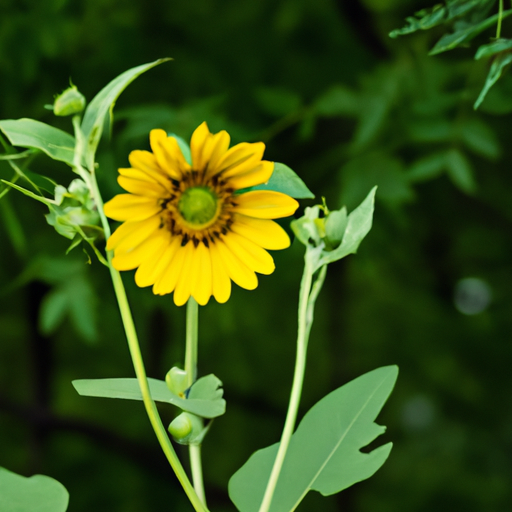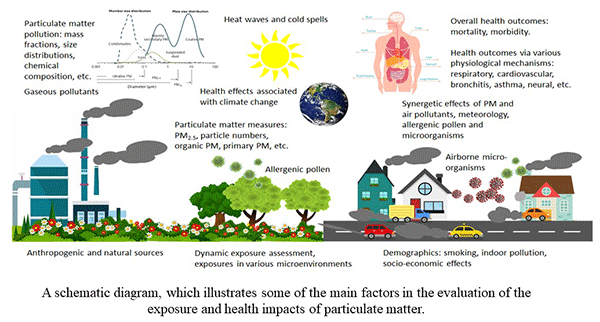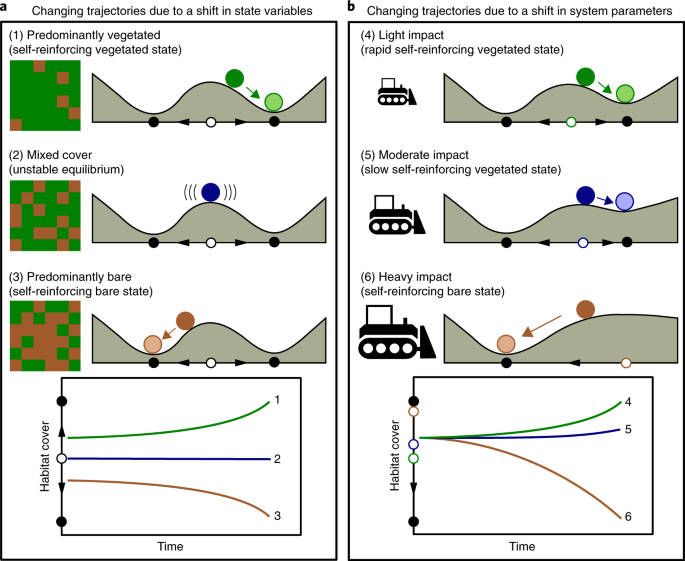If you’re looking to enhance your outdoor space without breaking the bank or harming the environment, then budget-friendly eco-friendly landscaping is the perfect solution for you. With a focus on cost-effective and sustainable practices, this approach allows you to create a beautiful and eco-conscious landscape while staying within your budget. From utilizing native plants and practicing water conservation techniques to repurposing materials and implementing DIY projects, there are plenty of affordable and environmentally-friendly ways to transform your outdoor oasis into a green haven. In this article, we will explore some simple yet effective strategies to help you achieve a stunning landscape that not only aligns with your budget but also helps protect our planet. Get ready to revamp your outdoor space with eco-friendly landscaping solutions that won’t break the bank!
Choosing Native Plants
Why choose native plants?
When it comes to landscaping, choosing native plants can have numerous benefits. Native plants are those that naturally occur in a specific region and have adapted to the local climate, soil conditions, and wildlife. By opting to use native plants in your landscaping, you are making a sustainable and eco-friendly choice.
Benefits of using native plants in landscaping
There are several advantages to using native plants in your landscaping design. First and foremost, native plants are well-adapted to the local climate, meaning they require less water, fertilizer, and pesticides compared to non-native species. This not only saves you money on utility bills and gardening supplies but also reduces the environmental impact of your landscaping.
Native plants also play a vital role in supporting local wildlife. They provide habitat, food, and shelter for various species, including pollinators like bees and butterflies. By incorporating native plants into your landscaping, you’re creating a welcoming environment for wildlife and helping to restore the balance of local ecosystems.
Finding native plants for your region
Finding native plants for your specific region can be relatively easy. You can start by consulting local gardening or horticulture organizations, as they often have resources and lists of native plants suitable for your area. Additionally, many nurseries and garden centers now prioritize stocking native plant varieties.
Online databases and resources can also be valuable tools for finding native plants. Websites like the National Wildlife Federation’s Native Plant Finder or your state’s Extension Service website can provide detailed information on native species that are ideal for your region.
How to incorporate native plants into your design
Incorporating native plants into your landscaping design is a straightforward process. Begin by assessing your site’s conditions, including soil type, sunlight exposure, and drainage. Research which native plants thrive in those conditions and make a list of suitable options.
Consider the different heights, textures, and colors of native plants to create a visually appealing landscape. Group plants with similar environmental requirements together to simplify irrigation and maintenance. It’s also essential to research the growth habits of each native plant to ensure they won’t overcrowd each other or nearby structures.
Remember, incorporating native plants into your design doesn’t mean you have to solely rely on them. Supplementing with non-native plants that are well-suited to your region and share similar environmental requirements can provide variety and enhance the overall aesthetics of your landscape.
Creating a Rain Garden
What is a rain garden?
A rain garden is a specially designed garden area that collects and absorbs rainwater runoff from roofs, driveways, and other impermeable surfaces. It allows the water to naturally infiltrate the soil instead of flowing into storm drains or nearby water bodies. Rain gardens are not only functional but also visually appealing additions to any landscape.
How it helps the environment and your budget
Creating a rain garden has multiple benefits for both the environment and your budget. Rain gardens help reduce stormwater runoff, which can contribute to erosion, flooding, and water pollution. By allowing rainwater to infiltrate the soil, rain gardens recharge groundwater supplies and filter out pollutants, making them an eco-friendly solution.
From a financial perspective, rain gardens can help reduce water bills by minimizing the need for additional irrigation. The native plants typically used in rain gardens require less watering once established, as they are well-adapted to local conditions. Additionally, by reducing erosion and filtering pollutants, rain gardens can help prevent costly damage to infrastructure and natural water systems.
Step-by-step guide to creating a rain garden
Creating a rain garden involves several key steps:
-
Site selection: Identify a suitable location in your landscape with good drainage and a natural slope to guide water flow towards the garden area.
-
Sizing and design: Determine the appropriate size and shape for your rain garden, considering factors like the amount of rainfall, size of the contributing area, and available space.
-
Excavation and soil preparation: Dig out the designated area to a depth of 6-8 inches. Amend the soil with organic matter to improve drainage and add nutrients.
-
Plant selection: Choose native plants that can tolerate both periods of heavy rain and dry spells. Include a mix of grasses, flowers, and shrubs to provide visual interest and support local wildlife.
-
Mulching and maintenance: Apply a layer of mulch to help retain moisture and suppress weed growth. During the establishment period, water the rain garden regularly to ensure proper plant growth and survival.
Choosing the right plants for your rain garden
When selecting plants for your rain garden, it’s crucial to choose species that can tolerate the unique characteristics of the area. Native plants are typically the best choice, as they are adapted to local conditions and require minimal maintenance. Look for plants that can handle periods of both excess moisture and drought.
Grasses like switchgrass (Panicum virgatum), sedges (Carex spp.), and blue flag iris (Iris versicolor) are excellent choices for rain gardens, as they have deep and fibrous root systems that help with water absorption. Wildflowers such as black-eyed Susan (Rudbeckia hirta) and New England aster (Aster novae-angliae) add color and attract pollinators. Shrubs like buttonbush (Cephalanthus occidentalis) and winterberry (Ilex verticillata) provide additional visual appeal and habitat for wildlife.
Composting and Mulching
The importance of composting and mulching
Composting and mulching are essential practices in eco-friendly landscaping. Both techniques contribute to soil health, reduce waste, and conserve water, making them valuable tools for budget-friendly and sustainable gardening.
How composting reduces waste and enhances soil quality
Composting is the process of decomposing organic materials, such as kitchen scraps, yard waste, and leaves, into nutrient-rich humus. By composting, you divert waste from landfills, reducing methane emissions and the need for synthetic fertilizers.
Compost improves soil structure, enhances nutrient availability, and promotes beneficial microbial activity. The rich organic matter in compost helps retain moisture in the soil, reducing the need for frequent watering. Compost also acts as a natural slow-release fertilizer, providing plants with a steady supply of essential nutrients.
Different methods of composting
There are various methods of composting, allowing you to choose one that suits your space, time, and resources:
-
Backyard composting: This traditional method involves creating a compost pile or using a compost bin in your yard. It requires regular turning and monitoring of the compost pile’s moisture and temperature levels.
-
Vermicomposting: Using composting worms (such as red wigglers) to break down organic materials in a worm bin. This method is ideal for small spaces like apartments or balconies.
-
Trench composting: Burying organic waste directly in the garden beds. This method can enrich the soil as the organic material decomposes.
-
Bokashi composting: Fermenting organic waste using a specialized system that accelerates the breakdown process. The fermented waste can be added directly to the soil or composted further.
Using organic mulch in your landscaping
Mulching is the practice of covering the soil surface around plants with a layer of organic materials, such as wood chips, straw, or shredded leaves. Mulch provides several benefits, including weed suppression, moisture retention, and temperature moderation. It also helps improve soil health by gradually breaking down and adding organic matter to the soil.
When applying mulch, make sure to maintain a layer that is 2-4 inches thick. Avoid piling mulch directly against the stems or trunks of plants, as this can lead to moisture retention, rot, or pest issues. Keep the mulch a few inches away from the base of the plant to prevent potential damage.
Cost-effective ways to obtain compost and mulch
Obtaining compost and mulch can be done in cost-effective ways. Instead of purchasing commercially produced compost, consider starting your own compost pile or participating in community composting programs, which often provide free or low-cost compost. Contact your local municipality or waste management department for information on composting initiatives in your area.
For mulch, contact local tree care companies or municipal tree maintenance services to inquire about free wood chips. Many times, these organizations will have excess wood chips available, which they are often willing to deliver for free or at a minimal cost. Alternatively, consider sourcing mulch from fallen leaves in your own yard or those gathered from neighbors for a natural, budget-friendly option.
Using Permeable Paving
What is permeable paving?
Permeable paving, also known as porous or pervious paving, is a type of pavement that allows water to infiltrate through its surface into the underlying soil. Unlike traditional impervious surfaces like concrete or asphalt, permeable paving promotes stormwater management and mitigates the negative impacts of stormwater runoff.
Advantages of permeable paving for eco-friendly landscaping
Permeable paving offers several advantages for eco-friendly landscaping:
-
Stormwater management: By allowing water to infiltrate into the ground, permeable paving reduces the amount of stormwater runoff reaching storm drains and local water bodies. This helps prevent erosion, flooding, and water pollution.
-
Groundwater recharge: The presence of permeable paving allows rainwater to replenish groundwater supplies, ensuring the sustainability of local water resources.
-
Heat island mitigation: Unlike traditional impervious surfaces that absorb and radiate heat, permeable paving materials tend to be cooler. This helps mitigate the urban heat island effect and creates a more comfortable outdoor environment.
-
Improved soil health: Permeable paving enables air exchange and water infiltration into the soil, promoting healthier soil and root growth for adjacent plants.
Types of permeable paving materials
There are various types of permeable paving materials available, each with its own unique characteristics and aesthetic appeal:
-
Permeable concrete pavers: These interlocking concrete pavers have narrow gaps between them, allowing water to seep through. They offer a wide range of design options and can be installed in various patterns.
-
Permeable asphalt: Similar to traditional asphalt but with a porous structure, permeable asphalt allows water to pass through. It requires proper maintenance to prevent clogging and maintain its permeability.
-
Grid systems: Grid systems consist of plastic or concrete cells that are filled with grass, gravel, or other materials. They provide a sturdy, permeable surface suitable for driveways or parking areas.
-
Gravel and crushed stone: An affordable and readily available option, gravel and crushed stone create a permeable surface when compacted. They are commonly used for pathways and low-traffic areas.
Installing permeable paving on a budget
Installing permeable paving can be done on a budget by considering the following tips:
-
Choose cost-effective materials: Opt for more budget-friendly options like gravel or permeable concrete pavers rather than high-end materials.
-
DIY installation: If you have the skills and resources, consider installing the permeable paving yourself instead of hiring a professional. Remember to research proper installation techniques to ensure the longevity and performance of the pavement.
-
Consider partial installations: If budget constraints are an issue, focus on creating permeable areas strategically. For example, prioritize permeable paving in areas where stormwater management is most critical, such as driveways or high-traffic pathways.
-
Seek local incentives: Some municipalities offer incentives or rebates for installing permeable paving as part of stormwater management initiatives. Check with your local government or environmental organizations to see if any programs are available in your area.
Remember, proper maintenance is crucial to ensure the effectiveness and longevity of permeable paving. Regularly inspect the surface and clear any debris or sediment that may hinder permeability.





